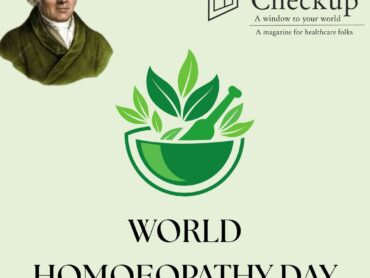It is a common belief that love heals a person; but according to some recent studies; it has been reported that the love hormone-Oxytocin, heals a person’s heart by the process of Oxytocin-induced cytoprotection. Continue reading to know more specifics-

Oxytocin as we all know it, is a hormone secreted by paraventricular cells of the hypothalamus. It stimulates the uterine myometrium to undergo contractions via the release of prostaglandins and sending the myocytes into a vicious cycle leading to the expulsion of the foetus and also acting on the breast tissue which leads to lactation. It is called the ‘milk letdown’ hormone because it forms the major component of the milk ejection reflex in mothers.
Recently, this simple-looking peptide was discovered to have functions more complex than those mentioned above. Oxytocin plays a role in forming interpersonal relationships and also promotes bonding and cooperation among individuals. Its role has also been implicated in romantic relationships which is why it is popularly known as the ‘love/cuddle hormone’.
Cardiovascular ailments adversely injuring the myocardium (most commonly, myocardial infarction) lead to its inevitable death. Major life-threatening complications following these diseases include arrhythmias, ventricular wall rupture, cardiogenic shock, cardiac aneurysm, pericarditis, etc mainly arise due to the death of myocytes in a particular area creating an infarct that heals with scar formation, which affects the contractility of the remaining heart tissue. Hence, many studies are aimed at finding ways to somehow halt this ongoing process or explore the premise that there might be a way by which these cells regenerate.
In many non-mammalian species like Zebrafish, replacement of dead cardiac tissue by activation of epicardial cells has been observed. For the longest time, it was believed that this kind of regeneration was impossible in mammals until some years ago when experimental studies conducted on rats showed that some amount of regeneration may be possible. Upon probing further, Oxytocin was found to be the possible missing link.
According to an article published in the Brazilian Journal of Medical and Biological Sciences; Oxytocin exerts the following actions on the heart- vasodilatation, parasympathetic neuromodulation, negative chronotropic and inotropic effects, anti-inflammatory and antioxidant activity, etc. A major mechanism by which oxytocin exerts anti-inflammatory effects is that it decreases the expression of pro-inflammatory cytokines like TNF-?, IL-1, and IL-6 which can be postulated as one of the ways it offers cytoprotection. Some studies suggest that the protective action might also be attributed to Oxytocin’s negative chronotropic and inotropic action which leads to a reduction in infarct size.
 Shifting focus from these processes mentioned above which might contribute to the regeneration in a minor way; the major process by which oxytocin induces regeneration is by- activation of epicardial cells which migrate to the myocardium and differentiate into cardiomyocytes to replace the lost tissue. This phenomena which was already observed in Zebrafish has recently been seen in human cell cultures also. In human stem cell cultures; the human Induced Pluripotent Stem Cells (hIPSCs) get converted to Epicardium-derived Progenitor Cells (EpiPCs). Under natural conditions, this conversion is inefficient; however, amongst many other molecules tested; oxytocin reportedly doubled the rate of this conversion via the TGF-? signaling pathway. This pathway also regulates the growth, differentiation, and maturation of these cells to the myocardium, thus replacing the lost tissue. Nitric oxide, reactive oxygen species, and protein kinase C are of paramount importance in oxytocin-induced cytoprotection.
Shifting focus from these processes mentioned above which might contribute to the regeneration in a minor way; the major process by which oxytocin induces regeneration is by- activation of epicardial cells which migrate to the myocardium and differentiate into cardiomyocytes to replace the lost tissue. This phenomena which was already observed in Zebrafish has recently been seen in human cell cultures also. In human stem cell cultures; the human Induced Pluripotent Stem Cells (hIPSCs) get converted to Epicardium-derived Progenitor Cells (EpiPCs). Under natural conditions, this conversion is inefficient; however, amongst many other molecules tested; oxytocin reportedly doubled the rate of this conversion via the TGF-? signaling pathway. This pathway also regulates the growth, differentiation, and maturation of these cells to the myocardium, thus replacing the lost tissue. Nitric oxide, reactive oxygen species, and protein kinase C are of paramount importance in oxytocin-induced cytoprotection.
Although many more clinical trials are required for oxytocin to make its way into therapeutics for cardiac regeneration so far, the results obtained have been quite promising. And because oxytocin is endogenously produced in the body, expected side effects are also less which makes it an effective therapeutic agent for the future and it has the potential to revolutionise treatment post-myocardial infarction.









